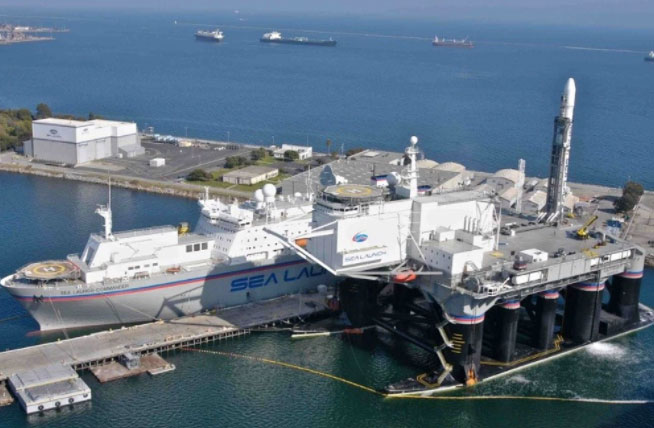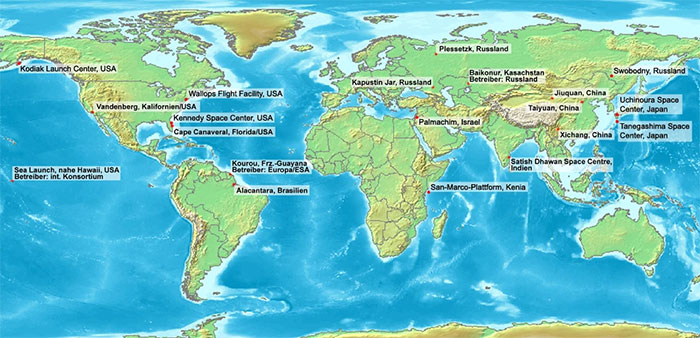If built, the spaceport will bring enormous benefits to Vietnam in the future.
What is a Spaceport?
A spaceport or space airport is a location for launching (or receiving) spacecraft, similar to a seaport for ships or an airport for airplanes. A spaceport is where spacecraft are launched into orbit around the Earth or on interplanetary trajectories.
Major spaceports often include more than one launch complex, which may consist of launch pads tailored for different types of launch vehicles. These locations can be distinctly separated for safety reasons. For vehicles using liquid fuel, appropriate storage facilities are required, and in some cases, the spaceport may even have fuel production facilities. On-site processing facilities for solid propellant are also quite common.
Viewing Space from the Maritime Perspective
Space travel was once considered a fantasy. However, humanity’s perspective changed following groundbreaking events in 1957 and 1961.
Major countries openly expressed competition, and the entire world began to follow the space race. The military powers focused on the space domain, interested in reconnaissance and communication activities in space, ready to spend enormous amounts from national budgets for this purpose.
Even smaller nations began to show significant interest in the space industry, exploring the opportunities that space exploration offers. Vietnam is no exception. Recently, Vietnam’s NanoDragon satellite was launched into space from the Uchinoura launch site in Kagoshima, Japan.

Russia’s Sea Launch floating spaceport. (Source: Naukatehnika.com)
Looking at the space industry, one can see the shadows of maritime history. Initially, great mariners undertook bold voyages, gradually venturing further from shore. Later, warriors and traders began to follow the explorers and adventurers.
To a certain extent, the presence of military forces and merchant fleets has become indispensable for an advanced power. Vessels and fleets require corresponding seaport facilities, making the sea a strategic territory for many powers such as the Russian Empire and others.
Notably, not every location has a convenient seaport. As a result, there have been many fierce battles over such strategic positions, including places like Hong Kong, Singapore, the Suez Canal, the Panama Canal, Constantinople, Gibraltar, Aden, and Cape Town…
In Vietnam, coastal cities with large ports have always been economic centers, attracting both domestic and foreign investments, boosting trade, and generating substantial profits for the country.
Vietnam’s Favorable Characteristics
History is repeating itself with the spaceport. Suitable locations for a spaceport need certain characteristics that not every place can meet.
According to Grigory Trofimchuk, a Russian expert in foreign policy, defense, and security, first and foremost, a spaceport needs to be located near the equator. The Earth rotates from west to east. Therefore, all rockets flying into interplanetary space launch eastward to take advantage of the Earth’s rotation for additional speed. In other words, the further a spaceport is from the equator, the smaller the additional speed gained. If a spacecraft is launched from the poles, the additional speed can be considered “zero.”
Thus, geographically, southern Vietnam meets this criterion as it is relatively close to the equator. In this regard, Vietnam is even more advantageous than China due to its proximity to the equator.

Existing and planned spaceports around the world.
Additionally, a spaceport requires good weather conditions. For the space engineering sector, ideal conditions include clear skies and very light winds. The area where rocket stages fall also plays a crucial role, so spaceports are typically built on the eastern shores of large bodies of water or in desert regions.
Experts explain that the altitude of a spaceport also provides advantages during launches, as the higher the altitude, the more efficiently the rocket engines operate. This is why the best spaceports in the world can be constructed in high-altitude desert regions like Tibet, where the elevation is 5,000 meters above sea level for rocket launches. However, it is very challenging to transport rockets there and operate effectively. Such a spaceport is technically convenient but extremely inconvenient for humans.
Thus, the option of building in coastal areas proves to be the most reasonable, and Vietnam once again has this special advantage due to its long coastline and relatively stable weather.
“The Gold Mine” of the Future
Singapore, Hong Kong, Saint Petersburg, and New York were once barren, swampy, “pirate havens”… But the emergence of seaports transformed these regions.
The race into space has begun with potential benefits in trade, resources in space, including new profits, new opportunities, new hopes, new powers, and new global influence. New space alliances, super corporations, and political and international unions in the space sector are being formed. As a country in a strategic position, Vietnam holds a significant opportunity in this industry.
Looking at Vietnam’s “neighbors,” China has built a spaceport on Hainan Island. The President of Indonesia has also stated: “Yes, I need a spaceport.” He even called American billionaire Elon Musk: “Elon, come to Indonesia and build us a spaceport somewhere in the New Guinea region!”.
If Vietnam can have a spaceport, it holds a tremendous opportunity to become one of the leading countries in the industry. Russian experts state that while Russia is one of the three space powers, all its spaceports are located far north, too far from the equator.
Among all Indochinese countries, Vietnam is the closest and most understanding of Russia, making it most suitable for cooperation between the two sides. With Vietnam’s geographical advantages and Russia’s space experience, building a spaceport in Vietnam is entirely feasible.
From these insights, it can be concluded that Vietnam will not miss out on the major trends in the field of space exploration collaboration.

















































